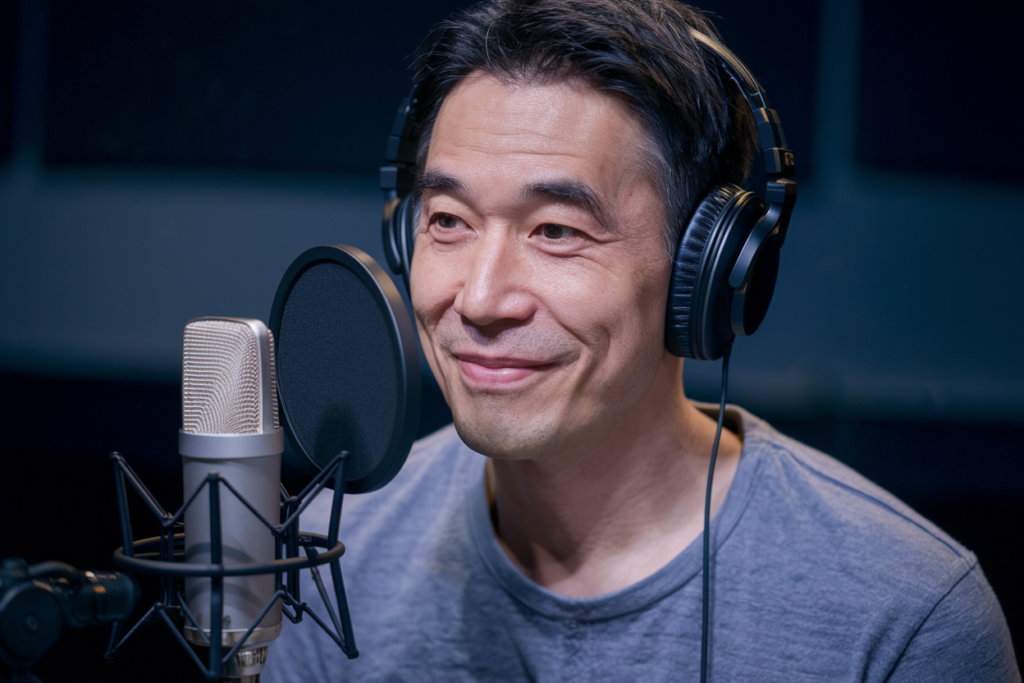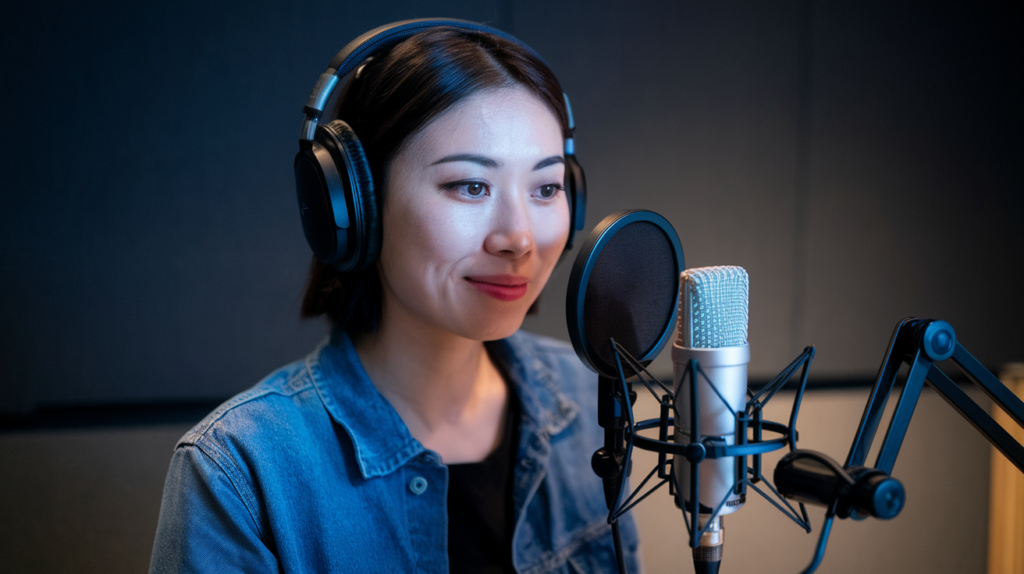Key Takeaways
- Rising Demand: Countries are increasingly requiring Japanese subtitles in media to meet the growing global interest in Japanese culture, particularly for anime and films.
- Accessibility Enhancement: Japanese subtitles improve accessibility for non-Japanese speakers, allowing broader audiences to enjoy content without language barriers.
- Cultural Representation: Accurate subtitling preserves cultural nuances and character emotions, fostering a stronger connection between viewers and the material.
- Regulatory Influence: Many regions have implemented policies mandating Japanese subtitles, leading to increased viewership and improved audience engagement in local markets.
- Integration with Voiceovers: Combining high-quality translations with skilled voiceovers enhances the overall viewing experience by adding emotional depth to characters.
- Future Trends: As technology evolves, automated subtitling may rise; however, maintaining cultural accuracy remains essential for effective storytelling.
Ever wondered why some countries require Japanese subtitles in media? As global interest in Japanese culture skyrockets, many nations are adapting their entertainment policies to cater to this demand. Whether it’s anime, films, or TV shows, understanding these requirements can be a game-changer for content creators and distributors alike.
Overview of Japanese Subtitles in Global Media
Japanese subtitles play a vital role in the global media landscape, particularly as interest in Japanese culture skyrockets. Countries that require Japanese subtitles often do so to enhance accessibility and understanding for audiences engaging with anime, films, and TV shows. This demand emphasizes the necessity for accurate translations and adaptations.
In regions like Southeast Asia and parts of Europe, regulatory policies increasingly mandate these subtitles. Such requirements not only cater to local audiences but also boost viewership numbers significantly. For example, countries with high engagement levels in Japanese media have seen a rise in content consumption when it includes well-executed subtitle work.
Content creators and distributors face unique challenges when integrating Japanese subtitles into their projects. They must ensure that cultural nuances are preserved while keeping the translation fluid and natural. This balance is crucial for maintaining audience connection and enjoyment.
Moreover, the presence of voiceovers can complement subtitled content effectively. While viewers read along with captions, skilled voice talent can bring characters to life through emotional delivery, enhancing overall viewer experience. The combination of quality subtitles alongside proficient voiceover work creates an immersive environment for audiences.
As you consider producing or distributing content featuring Japanese elements, understanding these dynamics becomes essential. Adapting media to meet localization needs ensures that your audience feels included and engaged on a deeper level.
Importance of Japanese Subtitles
Japanese subtitles play a crucial role in bridging cultural gaps and enhancing the viewing experience for global audiences. They not only make content accessible but also deepen understanding of complex narratives.
Enhancing Accessibility
Subtitles significantly improve accessibility for viewers who may not speak Japanese fluently. By providing accurate translations, they allow audiences to enjoy anime, films, and TV shows without language barriers. This is especially important in regions with diverse populations and varying levels of English proficiency. When you incorporate well-crafted subtitles, it opens up a world of entertainment to those who might otherwise miss out on rich storytelling.
Cultural Representation
Japanese subtitles serve as a means of cultural representation. They convey not just words but also the essence of characters and settings. Accurate translations maintain the original tone while highlighting cultural nuances that are often lost in translation. When done right, these subtitles enhance viewer engagement by fostering a deeper connection with the material. You’ll find that this cultural fidelity resonates strongly with local audiences, creating a more immersive experience overall.
By prioritizing high-quality Japanese subtitles, content creators can effectively reach broader markets while ensuring their stories resonate on multiple levels.
Countries Requiring Japanese Subtitles
Several countries have implemented requirements for Japanese subtitles in media to accommodate the growing interest in Japanese culture. These adaptations enhance accessibility and improve understanding for local audiences.
Japan
Japan leads the charge regarding subtitle requirements, especially in its own domestic media. The demand for high-quality translations ensures that international films and anime resonate with Japanese viewers. By integrating accurate subtitles, creators maintain cultural integrity while providing an immersive experience.
United States
In the U.S., platforms distributing anime and foreign films often include Japanese subtitles to cater to diverse audiences. Major streaming services recognize the value of these subtitles in expanding their viewer base. Accurate translations foster a better understanding of plots and character dynamics, creating a richer experience overall.
Canada
Canada’s bilingual nature encourages the inclusion of various languages, including Japanese subtitles, in media content. Both English and French-speaking regions benefit from subtitled materials that reflect cultural nuances accurately. This practice not only meets regulatory expectations but also enhances audience engagement through relatable storytelling.
Australia
Australia has seen an increase in demand for Asian media, leading to regulations promoting Japanese subtitles on pertinent content. These adaptations allow Australian viewers access to authentic narratives without losing essential context or meaning. Quality subtitling helps bridge cultural gaps while elevating global storytelling standards.
By focusing on high-quality translations along with voiceovers when needed, countries ensure that audiences enjoy rich narratives without language barriers while fostering deeper connections with local cultures.
Impacts on Media Consumption
Japanese subtitles significantly influence media consumption patterns across various regions. These subtitles enhance accessibility, enabling viewers who don’t speak Japanese to engage with diverse content. With the global popularity of anime and films, accurate translations become essential for conveying intricate narratives without losing cultural nuances.
Many countries have recognized this need, leading to regulatory policies that require Japanese subtitles in local media. For instance, Southeast Asian nations often mandate these subtitles to promote inclusivity while catering to growing viewer demand. Such regulations not only benefit audiences but also increase viewership numbers for content creators and distributors.
Moreover, the integration of high-quality voiceovers alongside subtitles further enriches the viewing experience. Skilled voice actors or artists bring characters to life, adding emotional depth that complements the written dialogue. This combination draws in broader audiences, allowing them to connect with stories on multiple levels.
Additionally, quality Japanese subtitling plays a vital role in cultural representation within media. Precise translations help convey character emotions and settings accurately while maintaining the original tone of the narrative. When viewers can understand both language and context seamlessly, it fosters a deeper connection with the material.
Ultimately, prioritizing high-quality Japanese subtitles not only enhances audience engagement but also opens up new market opportunities for producers worldwide. By tapping into this growing trend, content creators can reach diverse demographics and create memorable experiences that resonate long after viewing has ended.
Future Trends in Subtitling
The demand for Japanese subtitles continues to grow, driven by the increasing popularity of anime and Japanese films. Many regions now recognize the need for these subtitles not just as a convenience but as a requirement. Countries like those in Southeast Asia are implementing regulations that mandate their inclusion, ensuring audiences can fully appreciate rich narratives without language barriers.
As technology evolves, automated subtitling solutions are becoming more sophisticated. While machine-generated subtitles offer speed, they often lack the cultural nuances essential for accurate storytelling. That’s where skilled voice talent plays a vital role. Combining high-quality translations with engaging voiceovers creates an immersive experience that enhances emotional depth and connection to characters.
Moreover, interactive content is on the rise. With platforms offering user-driven experiences, effective subtitling will adapt to this trend. Expect more personalized subtitle options that cater to individual preferences while maintaining fidelity to the original script.
Cultural representation remains crucial as well. Accurate subtitles convey not only words but also emotions, tone, and context—elements central to character development and story arcs. As audiences become more discerning, prioritizing quality over quantity becomes essential for creators seeking broader market appeal.
As global interest in Japanese media expands, adapting subtitling strategies will be critical for content creators looking to connect meaningfully with diverse audiences across various regions. Integrating high-quality voiceovers alongside precise subtitles can significantly enhance viewer engagement and satisfaction.
Conclusion
The demand for Japanese subtitles in media is reshaping how audiences connect with content. As global interest in Japanese culture continues to rise, these subtitles become essential tools for enhancing accessibility and fostering understanding. Countries implementing regulatory policies recognize the importance of providing viewers with immersive experiences that transcend language barriers.
By prioritizing high-quality translations and skilled voiceovers, content creators can engage wider audiences while preserving cultural nuances. This evolution not only boosts viewership but also enriches storytelling across diverse platforms. Staying attuned to these trends will be crucial as you navigate the changing landscape of media consumption and look to resonate deeply with local audiences worldwide.
Frequently Asked Questions
Why are Japanese subtitles becoming more popular in media?
Japanese subtitles are gaining popularity due to the growing global interest in Japanese culture, particularly anime and films. Countries have recognized the importance of these subtitles for accessibility, ensuring that audiences can enjoy content without language barriers.
How do Japanese subtitles enhance viewer experience?
Japanese subtitles improve the viewer experience by providing accurate translations that retain cultural nuances. This allows non-Japanese speakers to engage with rich storytelling and better understand character emotions, settings, and themes.
What challenges do content creators face with subtitling?
Content creators often struggle to balance accurate translations with cultural representation. Ensuring that subtitled content conveys the original tone while being accessible can be complex, especially when catering to diverse regional audiences.
Which regions mandate Japanese subtitles in media?
Regions like Southeast Asia and parts of Europe have implemented regulations requiring Japanese subtitles. These policies cater to local audiences’ needs, enhancing accessibility and boosting viewership numbers for various media forms.
How do voiceovers complement Japanese subtitles?
Combining high-quality voiceovers with Japanese subtitles enriches the viewing experience by adding emotional depth. Skilled voice talent helps convey character emotions effectively while maintaining fidelity to the original dialogue.
What future trends are expected in subtitling for Japanese media?
The demand for high-quality Japanese subtitles is expected to grow as interest in anime and films continues rising. Future trends may include automated subtitling solutions with improved technology and personalized subtitle options tailored to individual preferences.







